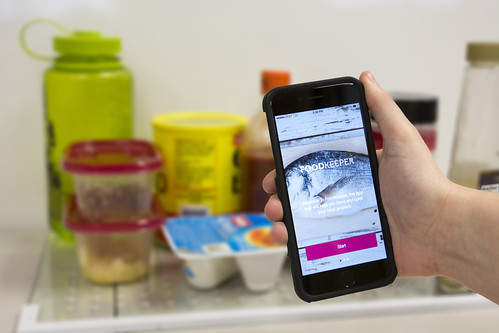
The holidays are a time for celebrating with family and friends. Office parties, holiday buffets and potluck dinners offer great opportunities to exchange gifts and goodwill. But if food is not properly handled, they can also be a breeding ground for dangerous bacteria that causes foodborne illnesses. Following the recommendations below will help keep foodborne bacteria off of your menu.
Shopping for Your Feast
- Separate raw meat, poultry and seafood from other foods when placing them in your shopping cart, packing them in grocery bags and storing them in your refrigerator.
- Buy cold foods last and plan to drive directly home from the grocery store. Take a cooler with ice or frozen gel packs for perishables and always refrigerate food within two hours (one hour if the surrounding temperature is above 90 °F).
Storing Your Food at Home
- When storing food, make sure the temperature in the refrigerator is 40 °F or below and 0 °F or below in the freezer.
- Juices from raw meat may contain harmful bacteria. Place raw meat, poultry and seafood in separate containers in the refrigerator or on a shelf below raw fruits and veggies, to prevent their juices from dripping on other foods.
Preparing Your Holiday Meals
- Wash hands and surfaces often.
- Wash hands with soap and water for 20 seconds before and after handling food. Use paper towels or clean cloths to wipe kitchen surfaces or spills.
- Never thaw food at room temperature. There are three safe ways to thaw food: in the refrigerator, in cold water and in the microwave. Cook food immediately after cold water or microwave thawing. See the “The Big Thaw” fact sheet for more information.
Cooking
- Cook stuffing in a casserole dish. If stuffing poultry, stuff just before roasting and use a food thermometer to check the internal temperature of the stuffing. It must reach 165 °F to be considered safe.
- Food should not be tasted until it reaches a safe minimum internal temperature. Partially cooking food increases the risk of bacterial growth on the food. Refer to the internal cooking temperature chart below for the recommended safe temperatures.
| Food | Internal Temperature |
| Beef, Pork, Veal, Lamb, Steaks, Roasts and Chops | 145 °F with 3 minute rest time |
| Fish | 145 °F |
| Ground Beef, Pork, Veal, Lamb | 160 °F |
| Egg Dishes | 160 °F |
| Turkey, Chicken and Duck, Whole, Pieces and Ground | 165 °F |
Serving Your Meal and Keeping Foods Out of the “Danger Zone”; Keep Hot Foods HOT and Cold Foods COLD
- When serving hot food on a buffet, foods should be held at 140 °F or warmer. You can keep hot foods hot with chafing dishes, slow cookers and warming trays. Make sure to heat foods to at least 165 °F. Do not reheat cold food in your slow cooker.
- Cold foods should be held at 40 °F or colder. Keep cold foods cold by nesting the serving dishes into bowls of ice. Otherwise, use small serving trays with smaller portions of food and replace as needed. If transporting cold foods, use a cooler with ice or a commercial freezing gel.
Be sure to refrigerate or freeze leftovers in shallow containers within two hours after cooking. Don’t forget to discard all perishable foods, such as meat, poultry and casseroles that were left at room temperature longer than two hours (one hour in temperatures above 90 °F).
For additional questions about storing leftovers, download our FoodKeeper app on your Android and iOS device. This app offers storage guidance on more than 400 items and cooking tips for meat, poultry, seafood and eggs.
The holidays give us the opportunity to build and maintain unity in our families and communities. Don’t allow harmful bacteria to spoil your fiesta. Prevention is safe food handling.



